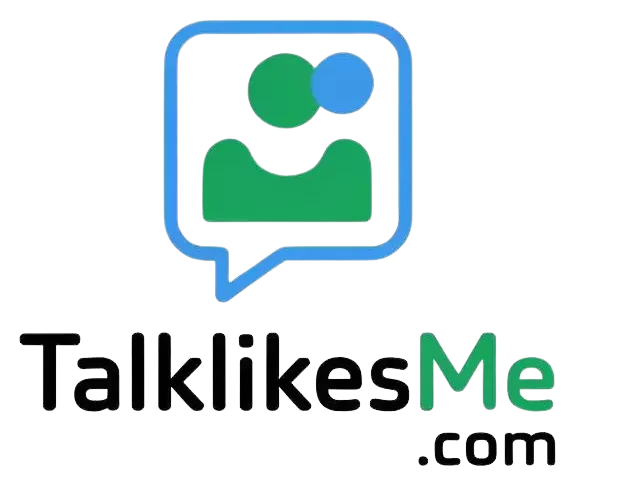I was at a lively party, and someone jokingly challenged me to a dance-off. With a grin, I responded, “You can’t handle me!”
It wasn’t just about boasting; it was about embracing the fun and confident energy of the moment.
This playful phrase can add a spark to conversations, if you’re up for a challenge or just enjoying some banter.
It’s all about projecting confidence and having a good time, knowing that it’s all in good fun.
What Does “You Can’t Handle Me” Mean?
When someone says “You can’t handle me,” they’re expressing a confident or cheeky assertion that they are too much to manage or deal with. It’s often used humorously or to emphasize self-assuredness.
How you respond can depend on the context—whether you’re engaging in playful banter, showing confidence, or asserting your individuality. It’s a way to highlight your personality and keep the interaction lively and engaging.
1. “Challenge accepted! Show me what you’ve got.”
You’re ready to take on the challenge with enthusiasm.
Example: “Challenge accepted! Show me what you’ve got.”
When to use: When you’re excited about the challenge and ready to engage.
When not to use: If you prefer to avoid the challenge or feel unprepared.
2. “Oh, really? I’m ready for anything!”
You want to show that you’re up for whatever comes your way.
Example: “Oh, really? I’m ready for anything!”
When to use: When you’re feeling confident and open to new experiences.
When not to use: If you’re not actually interested in taking on the challenge.
3. “Bring it on! I’m up for the test.”
You’re eager to take on the challenge and prove yourself.
Example: “Bring it on! I’m up for the test.”
When to use: When you’re feeling bold and confident.
When not to use: If you’d rather stay out of the limelight.
4. “You’re in for a wild ride!”
You want to hint at the fun and excitement to come.
Example: “You’re in for a wild ride!”
When to use: When you’re enthusiastic about the upcoming interaction.
When not to use: If you’re not feeling particularly adventurous.
5. “I hope you’re ready for this!”
You want to ensure the other person is prepared for what’s coming.
Example: “I hope you’re ready for this!”
When to use: When you’re confident and want to make the interaction exciting.
When not to use: If you’re not sure about the challenge or interaction.
6. “I’m full of surprises, so watch out!”
You want to convey that you have more to offer than meets the eye.
Example: “I’m full of surprises, so watch out!”
When to use: When you want to intrigue and engage.
When not to use: If you prefer a straightforward interaction.
7. “Let’s see if you can keep up!”
You want to challenge the other person to match your energy.
Example: “Let’s see if you can keep up!”
When to use: When you’re feeling energetic and want to test the other person’s stamina.
When not to use: If you’re not interested in a competitive interaction.
8. “I’ve got more tricks up my sleeve!”
You want to hint that there’s more to you than meets the eye.
Example: “I’ve got more tricks up my sleeve!”
When to use: When you want to keep things interesting and playful.
When not to use: If you’re not in the mood for playful banter.
9. “Are you sure you’re ready for this?”
You want to question whether the other person is prepared.
Example: “Are you sure you’re ready for this?”
When to use: When you want to add an element of suspense.
When not to use: If you prefer a more straightforward interaction.
10. “You’ve got your work cut out for you!”
You want to emphasize that the challenge won’t be easy.
Example: “You’ve got your work cut out for you!”
When to use: When you want to set a high bar for the challenge.
When not to use: If you’re not aiming to be competitive.
11. “Get ready to be amazed!”
You want to show that you’re ready to impress.
Example: “Get ready to be amazed!”
When to use: When you’re confident about your abilities and want to showcase them.
When not to use: If you’re not feeling confident.
12. “Prepare for a whirlwind!”
You want to convey that the interaction will be dynamic and exciting.
Example: “Prepare for a whirlwind!”
When to use: When you’re ready to bring a lot of energy.
When not to use: If you prefer a more subdued interaction.
13. “I hope you’ve got some energy to spare!”
You want to highlight that the challenge will be demanding.
Example: “I hope you’ve got some energy to spare!”
When to use: When you’re looking to emphasize the intensity of the interaction.
When not to use: If you’re not aiming for a high-energy challenge.
14. “You’re about to find out what I’m made of!”
You want to reveal your true capabilities.
Example: “You’re about to find out what I’m made of!”
When to use: When you’re eager to demonstrate your strengths.
When not to use: If you’re not ready to showcase your abilities.
15. “Get ready, this is going to be fun!”
You want to ensure the interaction is enjoyable for everyone.
Example: “Get ready, this is going to be fun!”
When to use: When you want to create a positive and enjoyable atmosphere.
When not to use: If you prefer a more serious interaction.
16. “I’m about to show you what I’ve got!”
You want to emphasize that you’re ready to impress.
Example: “I’m about to show you what I’ve got!”
When to use: When you’re feeling confident and want to showcase your skills.
When not to use: If you’re not in the mood to perform or compete.
17. “This is going to be a challenge you won’t forget!”
You want to make the challenge memorable.
Example: “This is going to be a challenge you won’t forget!”
When to use: When you want to leave a lasting impression.
When not to use: If you prefer a less intense interaction.
18. “Are you ready to be impressed?”
You want to set the stage for an impressive display.
Example: “Are you ready to be impressed?”
When to use: When you’re confident about what you’re about to do.
When not to use: If you’re not feeling confident about your performance.
19. “Hold on tight, this is going to be a ride!”
You want to convey that the experience will be thrilling.
Example: “Hold on tight, this is going to be a ride!”
When to use: When you’re bringing excitement to the interaction.
When not to use: If you’re aiming for a more relaxed or simple interaction.
20. “You’re about to see what I’m really capable of!”
You want to reveal your true potential.
Example: “You’re about to see what I’m really capable of!”
When to use: When you’re ready to demonstrate your full abilities.
When not to use: If you prefer to keep things modest or low-key.
21. “Get ready to be dazzled!”
You want to hint that you’ll be impressive.
Example: “Get ready to be dazzled!”
When to use: When you’re confident and want to wow the other person.
When not to use: If you’re not in the mood to impress.
22. “I hope you’re up for a wild time!”
You want to suggest that the experience will be energetic and fun.
Example: “I hope you’re up for a wild time!”
When to use: When you’re bringing a lot of energy to the interaction.
When not to use: If you prefer a quieter or less intense interaction.
23. “This is going to be a test like no other!”
You want to emphasize that the challenge will be unique.
Example: “This is going to be a test like no other!”
When to use: When you want to set a high bar for the challenge.
When not to use: If you want a more casual interaction.
24. “You’re about to get a taste of my best!”
You want to showcase your best qualities or skills.
Example: “You’re about to get a taste of my best!”
When to use: When you’re confident about showcasing your top abilities.
When not to use: If you’re not ready to show off.
25. “I’m about to show you what I’m all about!”
You want to reveal your core qualities or skills.
Example: “I’m about to show you what I’m all about!”
When to use: When you’re ready to make a strong impression.
When not to use: If you prefer to keep things understated.
26. “Get ready for an experience you won’t forget!”
You want to make sure the interaction is memorable.
Example: “Get ready for an experience you won’t forget!”
When to use: When you want to create a lasting impact.
When not to use: If you’re not aiming for a memorable interaction.
27. “You’re about to see why I’m one of a kind!”
You want to emphasize your unique qualities.
Example: “You’re about to see why I’m one of a kind!”
When to use: When you want to showcase your individuality.
When not to use: If you prefer a more general or standard interaction.
28. “I hope you’re ready for something extraordinary!”
You want to suggest that the experience will be exceptional.
Example: “I hope you’re ready for something extraordinary!”
When to use: When you’re aiming to deliver something special.
When not to use: If you’re not feeling up to delivering an extraordinary experience.
29. “Prepare for a challenge that will blow your mind!”
You want to convey that the challenge will be impressive.
Example: “Prepare for a challenge that will blow your mind!”
When to use: When you’re confident about the challenge.
When not to use: If you’re not confident or need to tone things down.
30. “Ready or not, here I come!”
You want to show that you’re about to make your move.
Example: “Ready or not, here I come!”
When to use: When you’re about to start something exciting.
When not to use: If you want to keep the interaction less dramatic.
Top Editor Choice Responses
- “Challenge accepted! Show me what you’ve got.”
- “Oh, really? I’m ready for anything!”
- “Bring it on! I’m up for the test.”
- “You’re in for a wild ride!”
- “I hope you’re ready for this!”
- “I’m full of surprises, so watch out!”
- “Let’s see if you can keep up!”
- “I’ve got more tricks up my sleeve!”
- “Are you sure you’re ready for this?”
- “You’ve got your work cut out for you!”



